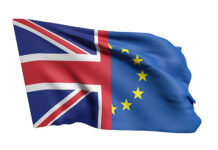This week’s central bank meetings kick off with the Reserve Bank of Australia, which will announce its rate decision during the Asian morning Tuesday. The forecast is for the Bank to keep its policy unchanged. Economic data have been mixed overall since the RBA’s latest gathering. Even though headline inflation accelerated in Q4, the trimmed mean rate actually slipped, indicating that underlying inflationary pressures remain subdued. What’s more, the nation’s GDP contracted in Q3, casting a shadow over the strong economic growth that Australia has enjoyed in recent quarters. On the bright side, the labor market tightened somewhat further in November and December. Considering that the Bank has adopted an overall neutral stance with regards to policy in recent months, we doubt that these data will materially alter that view. However, we could see a slightly dovish shift in the Bank’s statement that reflects the latest softness in economic indicators, something that could cause AUD to give back some of its recent gains.
AUD/USD traded higher on Friday, but the advance remained limited below the resistance of 0.7700 (R1). Then the pair retreated somewhat. Given that on Thursday, the rate broke above the upper bound of the sideways range between 0.7500 and 0.7600 (S2), we consider the short-term outlook to be positive. Nevertheless, bearing in mind the inability of the bulls to overcome the 0.7700 (R1) zone on Friday, we see the likelihood for a corrective setback before the next positive leg. The trigger for something like that could be a somewhat dovish RBA during the Asian morning Tuesday. Another dip below 0.7640 (S1) is possible to challenge the 0.7600 (S2) barrier as a support this time.
Looking ahead, we think that the RBA is likely to remain on hold in coming months, while it monitors the effects of its 2016 rate cuts, which were triggered by slowing inflation in the first half of the year. With regards to the recent market chatter for an RBA rate hike in 2017, we believe that it is far too early to even be discussing the prospect. We also do not think that the Bank will hint at anything like that in the foreseeable future, as it may trigger a speculative rally in AUD, something that RBA officials will not be pleased with. Let’s not forget that they have repeatedly expressed their desire for a weaker currency.
USD on the back foot as wage growth disappoints
The US economy continued to add jobs at a robust pace in January, the nation’s employment data showed on Friday. Nonfarm payrolls came in at 227k in January, far higher than the forecast of 175k, while December’s figure was revised marginally higher. The unemployment rate unexpectedly ticked up to 4.8% from 4.7%, but for healthy reasons, as the labor force participation rate rose alongside it to 62.9% from 62.7%, indicating that previously discouraged workers are returning to the labor force. The disappointing aspect of the report was wage growth, with average hourly earnings slowing down by more than expected in both monthly and yearly terms. These are discouraging news for FOMC policymakers and may have pushed back investors’ expectations with regards to the timing of the next rate hike.
EUR/USD spiked below the 1.0740 (S1) support after the above-expectations NFP number, but recovered quickly and traded even higher perhaps due to slowing earnings. The rebound remained limited slightly below the 1.0800 (R1) key obstacle. Given that the rate continues to oscillate below the 1.0800 (R1) resistance zone and that there is negative divergence between both our short-term oscillators and the price action, we prefer to stay sidelined for now with regards to the short-term outlook. Another attempt below 1.0740 (S1) could be a first sign that the bias has turned somewhat negative and is possible to open the way for the next support zone of 1.0685 (S2). As for the bigger picture, we maintain the view that the medium-term outlook remains cautiously negative. The price structure has been lower peaks and lower troughs since the 9th of November. So, as long as the recovery started on the 3rd of January remains limited below the 1.0800 (R1) hurdle, we would treat it as a corrective phase.
Overall, this disappointing wage result reinforces our view that the FOMC is likely to hike only twice this year, and that the officials may wait until June before acting again. We doubt that the Fed will want to rush into the next hike while wages remain lackluster and while core PCE inflation remains below 2%, leading us to conclude that a rate hike in March is a highly unlikely prospect with what we know today. With regards to USD, we prefer to adopt a neutral stance, at least in the near term. We would need some clarity on the nation’s fiscal direction for the currency’s outlook to become clearer, something that we may get today, or in the coming weeks.
Today’s highlights:
During the European day, the economic calendar is very light. The only noteworthy indicator we get is Germany’s factory orders for December, which are expected to have risen, a rebound from previously.
From the US, there is a possibility that we receive some information regarding the Trump administration’s fiscal plans. The President is required to submit his preliminary budget proposal to Congress on the first Monday of February, though sometimes this process is delayed. Clinton’s first budget was delayed by 66 days, Bush’s first budget by 63, and Obama’s by a record 94 days. We should also note that we are a long way off from having final budget numbers; the budget process is a prolonged back-and-forth procedure between the government and Congress that may not conclude until the second half of the year. Nonetheless, the preliminary figures could shed some light into the government’s objectives and intentions with regards to fiscal expansion, and particularly, the size and the composition of any potential stimulus package. A highly expansionary proposal could signal to investors that the new administration remains committed to its pre-election pledges for massive spending and tax cuts, thereby alleviating uncertainty around the nation’s fiscal direction. On the other hand, a more moderate budget could suggest that the government is not fully dedicated to delivering the fiscal stimulus it promised.
We have only one speaker scheduled for today: ECB President Mario Draghi.
As for the rest of the week:
On Tuesday, the RBA will announce its rate decision, as we highlighted above.
On Wednesday, during the European day, market attention may shift to the UK, where Parliament will vote again on the Article 50 bill, and potential amendments. Later in the day, investors will turn their gaze to the RBNZ rate announcement. Expectations are for this Bank to remain on hold as well, a view we share considering that the nation’s economic data have been slightly optimistic since the latest meeting.
On Thursday, we have no major events or indicators due to be released.
On Friday, Norway’s CPI for January is due to be released. In the UK, industrial output data for December are coming out, and in Canada, the employment report for January will take center stage.












